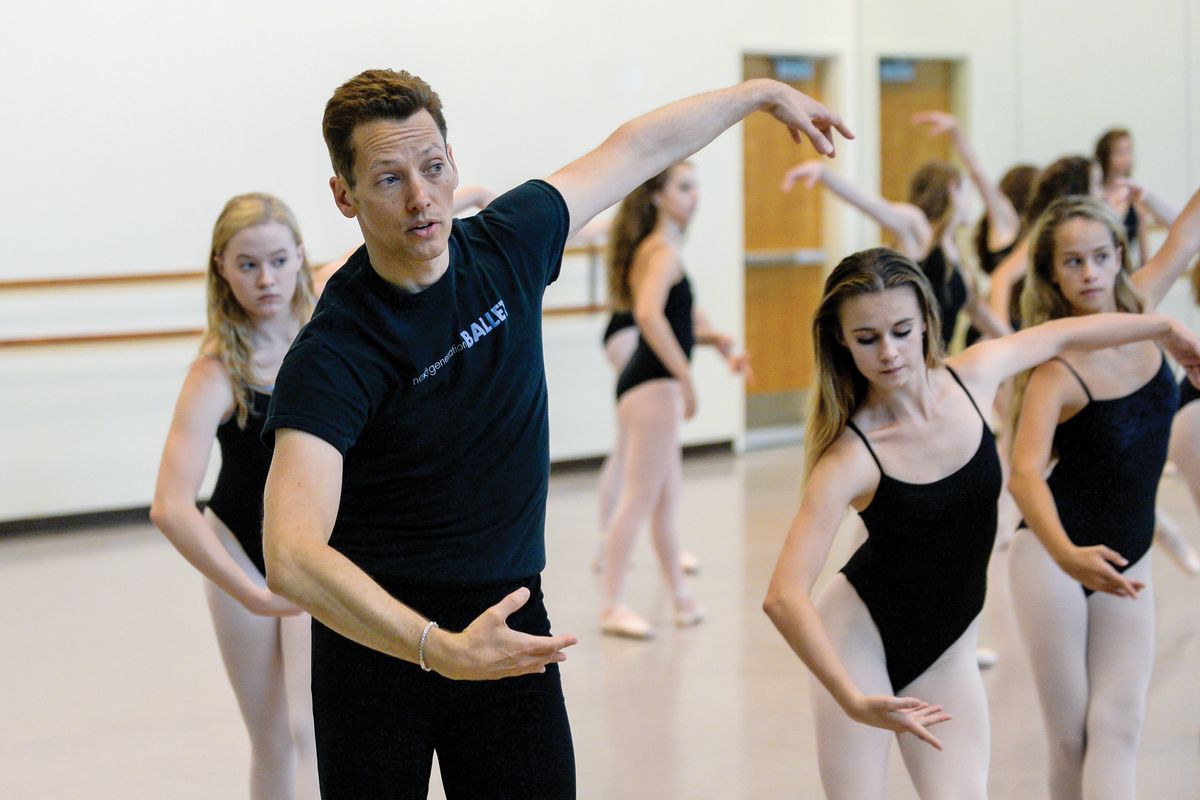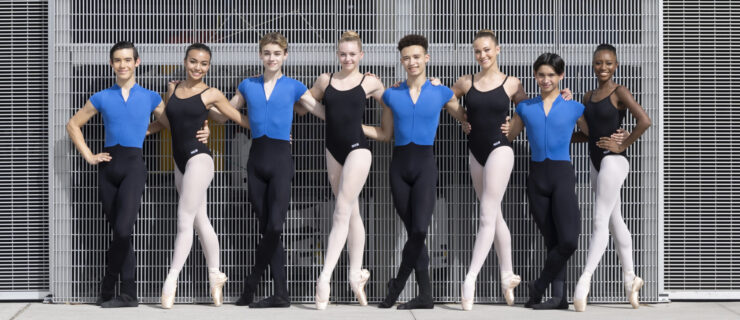Reading the Fine Print: Decoding What Trainee Programs and Second Companies Can Do For You
Updated 9/19/22.
The path to joining a company is not as clear-cut as it once was, when advanced students auditioned straight out of school and learned the ropes on the job. Directors, wanting dancers who can hit the ground running, are increasingly relying on second company and trainee programs to give them the professional experience they’ll need—while also filling out the main company’s corps de ballet. Such programs can be a great way to bridge the gap between training and career—and to get a foot in the door at a company you admire—but they’re not all created equally.
Even the terms “traineeship” and “second company” are fluid and, depending on the company, could describe anything from the top level of a school to a salaried contract akin to apprenticeship. Planning the first steps towards your career is exciting, but ambitious students need to be strategic, says Philip Neal, artistic director of Next Generation Ballet in Tampa, Florida. “They tend to get so enamored of the artistic allure of a program that they overlook the brass tacks of it,” says Neal. “Is it practical for you? Will your time there be an investment in your future?” Here are some important questions to consider as you research programs, and before you sign on the dotted line.
Training Focus Versus Performance Focus
First, think about what you need. What’s missing from your skill set? Consider how much (and what type of) performing experience you already have, how many hours a day you’re used to dancing and whether you’re used to being alongside professionals in class and rehearsals.
 Jaimi Cullen in The Sleeping Beauty. Kate Luber, Courtesy Tulsa Ballet
Jaimi Cullen in The Sleeping Beauty. Kate Luber, Courtesy Tulsa Ballet
Like many companies, Kansas City Ballet offers two programs for emerging dancers: a trainee program and a second company. While the trainees focus more on training (two to three days a week are dedicated solely to classes, depending on the performance schedule), Kansas City Ballet II is more integrated into the main company, taking class and rehearsing with them four days a week. Artistic director Devon Carney says this distinction matters. “KCB 2 is like boot camp for understanding what the professional world is expecting of you,” he explains, while the trainee program is geared to give dancers with little (or no) experience in a company environment a more gradual initiation.
One important question Carney says not many dancers ask (but should) is what kind of performing they’ll get to do. Most traineeships and second companies promise participation in main company productions. But, says Carney, will you get a fair shake at being considered for every production—not only full-length ballets, but mixed-rep programs, too? “A big selling point is having a variety of performances, including lecture-demonstrations, a dedicated second-company show and main-company productions.”
About That Fine Print
The most exciting thing about becoming a trainee or second company member is getting a feel for professional life. But not all junior positions pay, and if they do, it likely won’t be enough to live on. Traineeships (like KCB’s) are commonly tuition-based, though many offer scholarships and may provide a stipend or limited pointe shoe allowance. For instance, Ballet Austin’s Butler Fellowship program (a feeder into Ballet Austin II) is fully endowed and tuition-free, but its 15 students still have to support themselves. Director Michelle Martin says the company tries to be supportive. “Their day is structured so there is time for a side job, which many of them do have,” she explains. “We’re adamant about being respectful of their time.”
Second companies are more likely to offer salaries, albeit minimal ones. Before accepting an offer to join KCBII, former member Divya Rea read the agreement carefully. “It specified how much I would make and recognized it wouldn’t be enough to live on, but also said that I wouldn’t have time for another job,” she says. Like many young dancers, Rea relied on her family for financial support. Those without such a safety net may need to inquire about teaching or assisting classes in the company’s school, or consider taking part-time jobs during layoffs to build savings.
There’s also the question of benefits. Ballet Austin II dancers are provided with health insurance and worker’s compensation (Butler Fellows are not covered), but this is rare for most programs. However, companies often provide access to their medical team for dance-related injuries. When Tulsa Ballet soloist Jaimi Cullen was a member of TBII, she received a monthly stipend and pointe shoes, but stayed on her family’s health plan since insurance wasn’t offered. “But if we needed to see a doctor or physical therapist, the company was really helpful in making sure we were taken care of,” she says.
There are other important considerations, too: For instance, does the company offer housing assistance? Is the location convenient or will you need transportation? Will you be happy living there for a year—or longer? “At the end of the day, I accepted my offer because I really loved the repertoire and wanted to dance at Kansas City Ballet,” says Rea.
How to Find the Right Info
What a junior position will really give you—and require from you—can be hard to determine if an organization’s website lacks specifics. Try getting firsthand accounts (keeping in mind that what’s right for one person may not be right for you) by using social media to find mutual acquaintances who’ve been there. “It’s amazing how much you can find out through your social network,” says Neal. And don’t be afraid to contact the company itself to ask for specifics.
Some information, like size, is easily found online and really matters; a large program likely won’t give you as much visibility to the artistic staff. That was important to Cullen. “Since TBII is so small”—12 dancers this season—”there was more attention paid to each dancer, and I knew I’d be seen by the director. I didn’t want to get lost in the shuffle.”
 Michelle Martin teaches dancers in Ballet Austin’s Butler Fellowship program. Anne Marie Bloodgood, Courtesy Ballet Austin
Michelle Martin teaches dancers in Ballet Austin’s Butler Fellowship program. Anne Marie Bloodgood, Courtesy Ballet Austin
Pay attention to success rate, too. Read the company bios to see not just how many dancers came up through the organization, but how long it took them. Most traineeships and second company positions last one to two years, but how many more rankings are there after that? Think about how much time you want to invest in a company’s junior ranks before moving on.
In addition, where have other graduates gone on to? A good program should make you feel confident that the staff is truly concerned about your future—whether it’s with their company or not. For instance, the Butler Fellowship program and Ballet Austin II are intended as a training ground for Ballet Austin. But since not everyone will be a fit for the company’s distinct style of collaborative, contemporary ballet, Martin invites artistic directors to Austin each season to scout for their own companies. “We’re committed to providing the kind of experience to help them become professional dancers anywhere,” says Martin.
Determining whether a program is right for you means having a clear picture of exactly what you need to gain from it—and then digging around to make sure you’ll get what’s advertised. “It’s easy to take something just because it’s offered to you, but that’s not always the best use of your time,” Martin says. “There are so many models of ‘second company’ that you have to look at each circumstance individually.
If you are interested in a trainee program or second company, here are crucial questions to ask:
• Will you be provided with a stipend or salary? If not, is there time for a part-time job? Will your family be able to help support you?
• Will you have performance opportunities, and what kind?
• Are pointe shoes provided? If so, how are they allotted—per week, per season or per performance?
• If health insurance is not offered, will you have access to the company’s medical team?
• How many dancers are in the program? Will you be able to work with the company’s artistic staff?
• What is the program’s job placement rate at the host company and elsewhere?
Is an unpaid or tuition-based program ever worth it?
It can be, says Next Generation Ballet artistic director Philip Neal, if the non-monetary benefits will fill a specific need for you—and if you can financially sustain yourself during the program. “If it’s imperative for you to get some professional performing experience, an unpaid or tuition-based position can be a good gig,” Neal says. He adds that such experience can be a stepping-stone, especially if the company’s artistic staff actively uses their professional connections to help you with recommendations and resumé and video preparation.






